Overview: Digital Transformation
Digital transformation is an over-used, over-abused term. Here’s what it means to me.
From many strategies ...
In most organisations, the following strategies are barely on speaking turns, let alone fully integrated and mutually supportive:
- Internal communication: Every day, valuable ideas and information pour into your organisation as staff engage with stakeholders and discover useful knowledge online. But what happens then? If a piece of knowledge is valuable to them, it's probably also useful to their colleagues ... so why does so little of it circulate within your organisation?
- Internal collaboration: Are your staff still emailing documents to each other, and spending hours tracing the latest version and integrating changes?
- Knowledge management: Can your staff find the knowledge they need efficiently, share information effortlessly without flooding everyone’s Inboxes, and serendipitously discover relevant information around the digital equivalent of the office watercooler?
- External communication: There is no better advocate for any organsation than empowered staff and engaged audiences. Have you transformed your workforce into Social Ambassadors, and launched communities to engage your customers and stakeholders in co-defining the future?
- Training and employee engagement: Even if you have the tools, can your staff use them? Do they know why they should?
... to one strategy: build an internal innovation community
How can you integrate the above strategies, processes and tools? By treating them as different aspects of one, overarching goal: the creation of an internal innovation community throughout your organisation.
everyone is trained and motivated to share knowledge internally and externally, supported by efficient tools and processes
The idea is to frame the above strategies, processes and tools as interconnected tactics within an overall strategic framework. This aligns them to a shared set of goals: an organisation where everyone is trained and motivated to share knowledge internally and externally, supported by efficient tools and processes for knowledge management, internal and external communications.
From Strategy to Implementation
Having such a strategy is all very well, but noone will notice if you never implement it. You'll need to plan for unknowns, coordinate experts who have never worked together before, and integrate project and change management so that:
- change rolls out with the new features, tools and processes,
- these are developed with your staff, not foisted upon them.
I’ve specialised in the intersection of internal and external communications, collaboration and knowledge management since 1995. If you need help, get in touch.
More services: start with Communication strategy.
Relevant resources
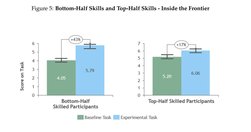
insights into the complex relationship between AI and knowledge work, emphasizing the need for a nuanced understanding of AI's role in enhancing productivity and quality in different task domains - Harpa

"But all good comes with new risks. With conversational AI, this includes data leakage, IP ownership conflicts and reproducibility requirements. Team members must be aware ... how and when to use it and the corporate policies around appropriate use... key questions your organization should be asking:"what can(not) you ask an AI tool?how …
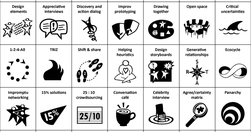
Liberating Structures is a pattern language that "provides a menu of thirty-three Liberating Structures to replace or complement conventional practices... [which are] either too inhibiting (presentations, status reports and managed discussions) or too loose and disorganized (open discussions and brainstorms) to creatively engage people ... to…

Analysing the impact of cultural diversity on corporate performance by feeding half-million Glassdoor reviews through a "Latent Dirichlet Allocation topic modeling" machine learning algorithm: "the “bag of words” approach... inductively infers categories... a statistical model that looks for words that tend to co-occur."Step 1:…

managers always have to balance the merits of teamwork... with the dangers of “groupthink”... Large groups are remarkably good, on average, at estimating such things as the number of beans in a jar or the weight of a prize calf. But that accuracy relies on the guesses being independent.... Modern communication methods mean that collaboration is mo…
In his new book, Originals: How Non-Conformists Move the World, Adam investigates who comes up with great ideas, how, and what we can do to have more of them.... They often procrastinate, and that's how they incubate ideas.... Their parents focus more on values than rules... One of the risks is, you know, you have everybody marching in a different…
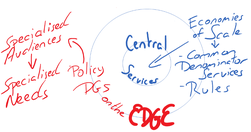
EUrope’s success in eliminating mobile roaming charges may be the first “data4policy” case study where the data was website traffic, and illustrates the rewards of allowing innovation to flourish at the edges of large organisations.

becoming a learning organization was nothing like winning a marathon ...cultivating an award-winning orchard... nurturing systems and culture to produce meaningful results... We embarked on a systematic and phased approach to cultivating the organization we all wanted.
not necessarily easy to get buy-in from the organization... different parts of the organization are responsible for their own little bits so you can’t always do it within your own team.

as CEO... your power and privilege leave you insulated... from information that might challenge your assumptions and allow you to perceive a looming threat or opportunity. Ironically, to do what your exalted position demands, you must in some way escape your exalted position... at firms that are highly successful innovators, leaders are especiall…

the increasingly collaborative nature of modern science. Perhaps nothing captures this dichotomy better than the story of the Higgs discovery... Almost 3,000 people qualify as authors on the key physics papers ATLAS produces... easier to guard against bias in interpreting the data The depth and breadth of this effort transform the act of discov…

an edge is not just a term for advantage itself; it can also be the place where you can find that advantage... the outer rim that frames what you do and separates it, quite conveniently, from what you don’t... When you proceed beyond this border in business, the main thing that changes is risk. they are the places where the inside and the outside…
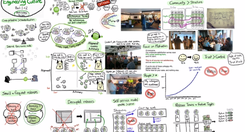
a new role that I believe will become more and more important: the Minister of Culture.WARNING: REAL CONTENT AHEAD! This essay links to most of the best research on culture. ... I’ll also show how to generate a culture score for your company and improve it. ... a full 3-6 month course on culture ... Don’t think of this as a long post — think of it…

"A large part of corporate economic activity today is still designed to accomplish what high market transaction costs prevented earlier. But the world has changed... coordination can be performed without intermediaries with the help of new technologies. Digital transparency makes responsive coordination possible... Apps can now do what manag…

If you ever wondered why meetings so often lead to the wrong decision ... "... we are wired in certain ways ... that can block groups from processing information effectively, which leads to bad decisions... Gilbert explains how to use diversity and inclusion to get better results from product ideation efforts... One of the most fundamental …
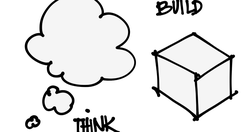
"While traditional strategy calls for rigorous analysis and critical thinking, design thinking espouses ‘thinking by doing’. The key is to find the sweet spot between the two approaches." Nice exploration of overthinking vs. underthinking: "... overthinking — aka ‘death by analysis’. An obsession with minimizing risk leads to the inability to ma…

"most digital transformation deployments fall into the 'deploy and pray' category, a minority address known pain points and use cases, whilst only about 20% of projects involve a concerted organisation-wide roll-out aimed at creating a connected company. ... paradigm shift is needed to go beyond just adopting social technologies towards creating a…

An excellent tour of management structures from hierarchy to holacracy, with some criticisms of the latter: "Hierarchies do authority incredibly well... but have some big flaws. They become slow, with decisions taking an eternity to pass up and down the ranks. Innovation from the edges is stifled by top-down control and bureaucracy.... So in the…

"There is no shortage of stories about companies that create amazing innovations with digital technology ... the software, media and technology industries ... account for less than 10% of the U.S. economy. What about the other 90%? We studied more than 400 large companies ... in every industry, companies are doing exciting things with digital te…
"Who says innovation is only for start-ups? In these interviews, the heads of three large, established companies—Intuit, Idealab, and Autodesk— argue there’s no reason big players can’t develop the next big thing... how it can remove roadblocks to experimentation, and the merits of creating its very own idea incubators. "one thing that’s made the…

"When you think about a company with no managers there’s a good chance your mind drifts to stories of chaotic “meritocracies”, bro-y cultures, and HR disasters. Whereas we value mentorship and coaching, continuous self-improvement, and strive to make sure everyone feels safe and supported. ... That said, we do think there are problems with tradit…

"The Five Whys technique was developed and fine-tuned within the Toyota Motor Corporation as a critical component of its problem-solving training... "by repeating why five times, the nature of the problem as well as its solution becomes clear." ... dig into each problem that arose until they found the root cause. "Observe the production floor w…

A timely and interesting article... "Gossip is an effective way of achieving these goals in an unhealthy social system. People engage in gossip when they lack trust or efficacy. We become consumers of gossip when we don’t trust formal channels... We become purveyors of it when we feel we can’t raise sensitive issues more directly... The problem w…

"businesses ... can, without realizing it, generate an environment hostile to innovation... frontline business units... are optimized to relatively short-term goals that are anchored in what they are currently doing or selling rather than in what they could be doing differently. As a result, line managers instinctively reject innovations that won…

The basic reasons we launched I-Labs are all here: "The most powerful way of learning is ... to have conversation... the best examples of great insight nearly always come from cases where people shared knowledge or experience.... every organisation is sitting on a wealth of information that potentially contains insight... This information is ly…

"We couldn't understand why people without technical knowledge had to tell programmers "what" to do and, furthermore, they had to supervise "how" programmers did it." At last. Someone said it. And also quite a bit more about the timesucks that are meetings, email and commuting. These guys avoid all of them, work 4 days/week and are growing …

Excellent insider's view of both theory & practice... "My first holacracy meeting made me want to quit my job. One year later, ... I can’t imagine going back to our old way of working.... a holacracy eschews titles and instead builds a chain of command based on the work that needs to be done. The group decides to distribute tasks. Those responsi…

Just listed to HBR's podcast interview with Pentland. Will probably get this book. Typically good roundup by Greg Satell: "Pentland’s research has found that the most important predictor of success in a group is the amount—not the content—of social interaction. It is exposure to peer activity that drives learning and changes in behavior.... in …
A whole bunch of reasons why the wrong consultants are hired for the wrong reasons: "When we don’t know much about somebody, we ... think about people in over-optimistic ways...what normal individual can stand up against an outsider or expert made up of pixie dust and rainbows? ... when we go looking for a better expert ... we tend to find them…
